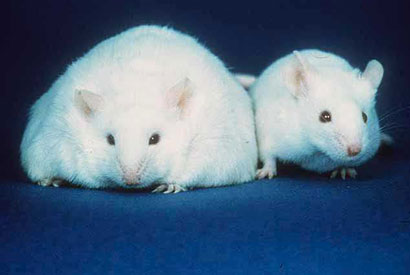Geographic variation of human gut microbes tied to obesity
Obese people have a different balance of microbes in their guts, researches have shown. Now UC Berkeley and University of Arizona researchers have found that people living in northern latitudes have a greater proportion of bacteria associated with obesity than do people living farther south.

February 14, 2014
People living in cold, northern latitudes have bacteria in their guts that may predispose them to obesity, according to a new study by researchers at the University of California, Berkeley, and the University of Arizona, Tucson.

The types of microbes that live in the human gut vary with latitude. People in northern climes have more obesity-related bacteria than do people living farther south. iStock photo.
The researchers’ analysis of the gut microbes of more than a thousand people from around the world showed that those living in northern latitudes had more gut bacteria that have been linked to obesity than did people living farther south.
The meta-analysis of six earlier studies was published this month in the online journal Biology Letters by UC Berkeley graduate student Taichi Suzuki and evolutionary biology professor Michael Worobey of the University of Arizona.
“People think obesity is a bad thing, but maybe in the past getting more fat and more energy from the diet might have been important to survival in cold places. Our gut microbes today might be influenced by our ancestors,” said Suzuki, noting that one theory is that obesity-linked bacteria are better at extracting energy from food. “This suggests that what we call ‘healthy microbiota’ may differ in different geographic regions.”
“This observation is pretty cool, but it is not clear why we are seeing the relationship we do with latitude,” Worobey said. “There is something amazing and weird going on with microbiomes.”
To Worobey, the results are fascinating from an evolutionary biology perspective. “Maybe changes to your gut community of bacteria are important for allowing populations to adapt to different environmental conditions in lots of animals, including humans,” he said.
Body size increases with latitude
Suzuki proposed the study while rotating through Worobey’s lab during his first year as a graduate student at the University of Arizona. Studies of gut microbes have become a hot research area among scientists because the proportion of different types of bacteria and Archaea in the gut seems to be correlated with diseases ranging from diabetes and obesity to cancer. In particular, the group of bacteria called Firmicutes seems to dominate in the intestines of obese people – and obese mice – while a group called Bacteroidetes dominates in slimmer people and mice.
Suzuki reasoned that, since animals and humans in the north tend to be larger in size – an observation called Bergmann’s rule – then perhaps their gut microbiota would contain a greater proportion of Firmicutes than Bacteriodetes. While at the University of Arizona, and since moving to UC Berkeley, Suzuki has been studying how rodents adapt to living at different latitudes.
“It was almost as a lark,” Woroby said. “Taichi thought that if Firmicutes and Bacteroidetes are linked to obesity, why not look at large scale trends in humans. When he came back with results that really showed there was something to it, it was quite a surprise.”

The researchers looked at data from more than 1,000 people from around the world. The blue represents the proportion of obesity-related bacteria in the gut, while red is the proportion of bacteria associated with slimness.
Suzuki used data published in six previous studies, totaling 1,020 people from 23 populations in Africa, Europe, North and South America and Asia. The data on gut microbiomes were essentially censuses of the types and numbers of bacteria and Archaea in people’s intestinal track.
He found that the proportion of Firmicutes increased with latitude and the proportion of Bacteriodetes decreased with latitude, regardless of sex, age, or detection methods. African Americans showed the same patterns as Europeans and North Americans, not the pattern of Africans living in tropical areas.
“Bergmann’s rule – that body size increases with latitude for many animals – is a good one and presumed to be an adaptation for dealing with cold environments,” said Suzuki’s advisor Michael Nachman, professor of integrative biology and director of UC Berkeley’s Museum of Vertebrate Zoology. “Whether gut microbes also help explain Bergmann’s rule will require experimental tests, but Taichi’s discovery adds an intriguing and completely overlooked piece of the puzzle to this otherwise well-studied evolutionary pattern.”
MORE INFORMATION
- Geographical variation of human gut microbial composition (Biology Letters)